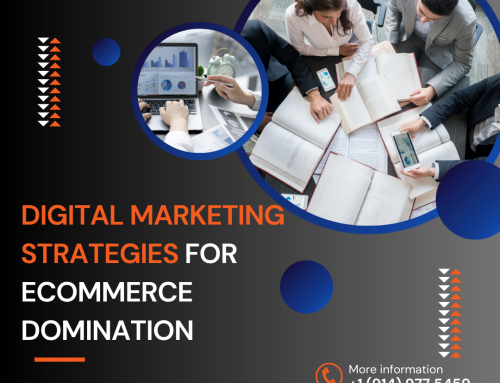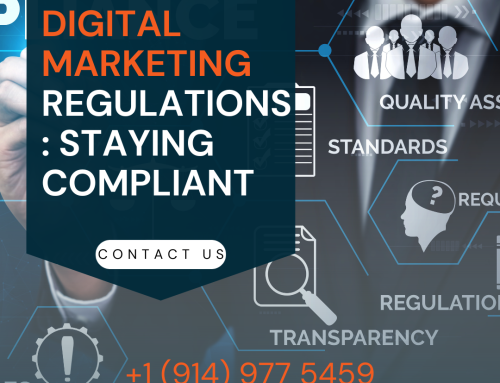In today's rapidly evolving digital landscape, the world of commerce has been dramatically transformed. Gone are the days when physical stores reigned supreme, restricted by location, operating hours, and the hassles of in-person shopping.
Share This Story, Choose Your Platform!
Welcome to the era of eCommerce, where the possibilities are endless, and the competition is fierce. If you’re looking to succeed in the world of online retail, you’ll need an effective eCommerce marketing strategy. In this comprehensive guide, we’ll walk you through the ins and outs of marketing for eCommerce, providing you with actionable strategies and in-depth insights to thrive in this dynamic industry.
The eCommerce Advantage
Before diving into the world of eCommerce marketing, let’s first understand what sets eCommerce apart from traditional brick-and-mortar stores. The key differentiators include:
Accessibility:
One of the most significant advantages of eCommerce is its accessibility. Online shoppers can browse and make purchases at any time, from virtually anywhere, transcending geographical boundaries. This accessibility opens up a vast potential customer base that brick-and-mortar stores can only dream of.
Cost-Efficiency:
Compared to brick-and-mortar establishments, online retailers can optimize their operations and reduce overhead costs. There’s no need for expensive rent, physical infrastructure, or a large staff. This cost-efficiency makes eCommerce an attractive option for businesses of all sizes, from small startups to established enterprises.
Scalability:
eCommerce websites can easily scale to accommodate growing product catalogs and increasing customer demands. Unlike physical stores constrained by limited shelf space, online stores can continuously expand their offerings without the limitations of physical space.
Global Reach:
One of the most compelling advantages of eCommerce is its ability to reach a worldwide audience. With the right strategies in place, your eCommerce store can attract customers from different corners of the globe. This global reach provides an opportunity for exponential growth and revenue generation.
eCommerce Marketing 101
Marketing for eCommerce involves increasing brand awareness, driving web traffic, and optimizing various strategies and tools to maximize online sales and revenue. To embark on a successful eCommerce marketing journey, it’s crucial to have a well-thought-out plan in place. Let’s delve deeper into each element of an effective eCommerce marketing plan.
eCommerce Marketing Plan
Use Emails To Drive Conversions:
Despite the rise of social media and other digital marketing channels, email marketing remains a powerful and cost-effective tool. According to Forrester Research, email accounts for 17% of marketing budgets and generates more than 24% of revenue. To leverage email marketing effectively:
Grow Your Email List: Use pop-up opt-ins and lead magnets on landing pages to capture email addresses and build your subscriber list.
Personalize Your Email Campaigns: Tailor your email content to individual preferences and behaviors.
Segment Your Audience: Divide your email list into segments based on interests and the stage of the buyer’s journey.
Use Marketing Automation: Implement marketing automation tools to engage consistently with your audience, sending them relevant content and offers.
Recover Abandoned Carts: Send targeted emails to shoppers who have abandoned their carts, encouraging them to complete their purchases.
Highlight New Products: Use email campaigns to alert your subscribers about the latest additions to your product catalog.
To streamline your email marketing efforts, consider using email marketing services like Constant Contact, which offer user-friendly platforms to create and manage email campaigns.
Improve Business-Consumer Interactions:
While online stores lack the physical presence of staff members, you can create meaningful interactions with customers through various digital tools. These interactions empower you to enhance the customer experience and drive sales. Here are some strategies to consider:
Live Chats: Implement live chat functionality on your website to assist customers in real-time. Guide them to product pages, answer questions, and provide personalized recommendations.
Help Desks: Offer a help desk where customers can submit inquiries and receive prompt responses.
Chatbots: Integrate chatbots into your website to automate responses to common queries and provide 24/7 support.
Personalized Offers: Use customer data and behavior analysis to offer personalized discounts and promotions.
Post-Purchase Messages: Send thank-you messages and requests for product reviews after customers make a purchase. Positive reviews can boost your credibility and attract more buyers.
By enhancing business-consumer interactions, you create a more immersive shopping experience, fostering customer loyalty and increasing sales.
Let Your Customers Market Your eCommerce Business:
Word-of-mouth and referral marketing are potent tools for promoting your eCommerce store and acquiring new customers. Research shows that about 89% of consumers read online reviews before making purchasing decisions, and 79% trust online reviews as much as personal recommendations from friends and family. Here’s how to harness the power of customer advocacy:
Display Reviews and Ratings: Showcase customer reviews and ratings prominently on your website to build trust with potential buyers.
Third-Party Review Platforms: Create business profiles on third-party review websites like Google My Business and Yellow Pages. Encourage satisfied customers to rate and review your products.
Referral Marketing: Implement a referral program using tools like ReferralCandy to incentivize your existing customers to refer friends and family. Reward both the referrer and the referee to promote customer loyalty.
Encourage your customers to share their experiences and talk about your products. Positive word-of-mouth can significantly impact your online marketing efforts.
Prepare Your Website for Promotions and Sales:
While this might seem like a basic tip, the importance of a well-designed and user-friendly website cannot be overstated. Slow-loading and poorly designed eCommerce websites can quickly deter prospective customers. Here’s how to ensure your website is optimized for promotions and sales:
Ease of Navigation: Your website should be easy to navigate, with clear categories and product descriptions. Shoppers should find what they’re looking for with minimal effort.
Fast Load Time: Slow-loading pages frustrate visitors. Invest in a reliable hosting service to ensure quick page loading times.
Responsive Design: Your website must be responsive, meaning it adapts seamlessly to different devices, including smartphones and tablets.
To streamline your eCommerce website development, consider using platforms like Bluehost Website Builder, which offer customizable templates, powerful eCommerce marketing tools, security features, and expert guidance for your business. Additionally, hosting services like WooCommerce hosting provide maximum scalability for your online store.
Build a Content Marketing Strategy:
Content marketing plays a pivotal role in eCommerce marketing, enhancing brand visibility, lead generation, and search engine rankings. Here are various ways to market your eCommerce store through content:
Start a Blog: Launching a blog is an excellent way to engage with your audience and provide valuable content. If you sell clothing, for instance, your blog can offer styling tips and upsell relevant products. Create blog posts that resonate with your target audience, such as “10 Ways to Rock Your Winter Wardrobe.”
Begin a Podcast: Podcasting is an effective way to build a community of like-minded individuals, showcase your expertise, share insights, and feature industry experts and influencers. It helps you gain credibility and a dedicated following.
Guest Post on Other Websites: Collaborate with authoritative websites in your industry by guest posting. This not only exposes your brand to a broader audience but also generates valuable backlinks that boost your domain authority and SEO.
Utilize Videos: Videos are a powerful marketing tool used by 89% of marketers to generate significant ROI. Platforms like YouTube can help you market your eCommerce website effectively, reaching a vast audience. Consider video marketing for pay-per-click (PPC) and Google ads.
Leverage Social Media: Social media platforms like Facebook, LinkedIn, Twitter, and Instagram are quick ways to drive potential customers to your website. Utilize hashtags, videos, live broadcasts, feed posts, and stories to promote your eCommerce business on your social media profiles and pages.
By implementing a robust content marketing strategy, you can position yourself as an expert in your industry, build authority, and gain the trust of your customers.
Final Thoughts: Success in eCommerce Marketing
In the fiercely competitive eCommerce landscape, mastering the art of eCommerce marketing is not just a choice; it’s a necessity. With approximately 2.64 billion online shoppers in 2023, the opportunities are vast, but so are the challenges. By implementing the strategies outlined in this guide, you can set your eCommerce business on the path to success.
It’s essential to keep in mind that eCommerce marketing is an ongoing process. Stay updated with industry trends, continuously refine your strategies, and adapt to the ever-changing digital landscape. By doing so, you can perform results-driven marketing for eCommerce and greatly increase your leads and revenue.
Are you ready to embark on your journey of marketing for eCommerce? Take the first step to increase your sales with Purple Cow’s Digital Marketing Services. Your journey to eCommerce success starts here, and we’re here to help you every step of the way.
Share This Story, Choose Your Platform!
In This Blog:

















